Made with materials used by NASA, this sleeping bag claims to work in -40°C… but does it?
We test a prototype Biigloo sleeping bag in subzero conditions, with very mixed results
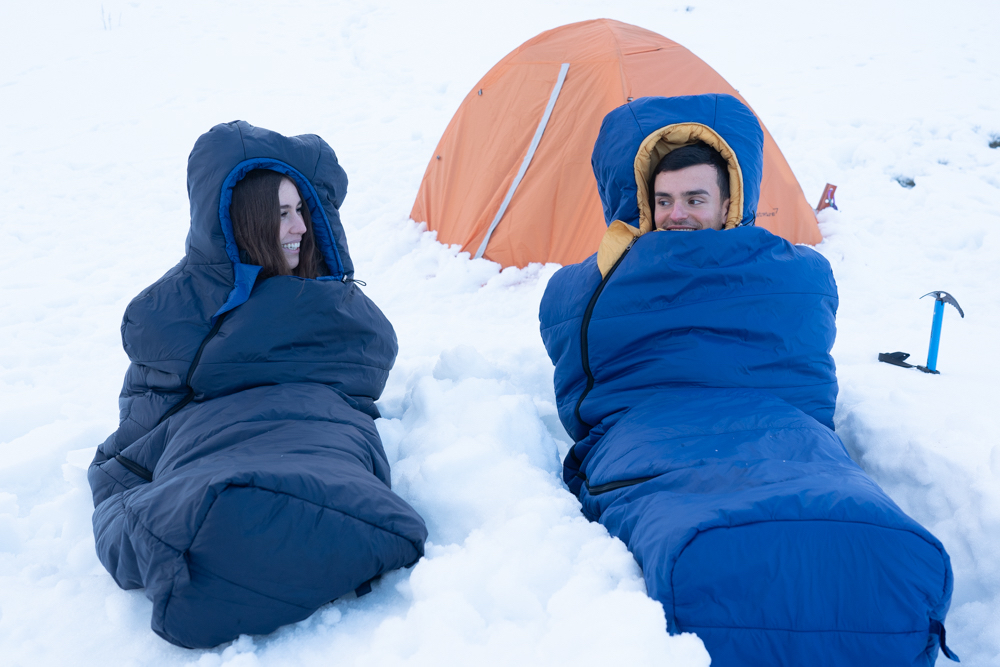
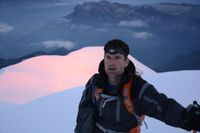
The temperature in space is mad. Out in far-flung interstellar regions it can get down to a super shivery 3 kelvins (-270.15°C), just a sliver above absolute zero (-273.15°C) which is the coldest anything can get ever. Of course temperatures vary massively depending where you are in relation to the sun, and whether you’re on a planet that has an atmosphere or not. But even on the surface of moon, where humans have left footprints, temperatures range wildly from +200°C to -200°C (+392°F to -328°F), which makes you wonder how lunar explorers survived at all, let alone felt comfortable enough to lark about and play golf.
Suffice to say, when sending people into space, NASA needs to kit them out in some pretty extreme gear, and the space agency plays around with a lot of materials and tech in its efforts to keep astronauts alive and productive. One set of substances they have experimented with extensively – with a view to using them for various applications, including with space suits – are aerogels. As per NASA: ‘Aerogels are among the lightest solid materials known to man. They are created by combining a polymer with a solvent to form a gel, and then removing the liquid from the gel and replacing it with air. Aerogels are extremely porous and very low in density. They are solid to the touch. This translucent material is considered one of the finest insulation materials available.’
As is often the case, materials developed for use in space work well on Earth too, and now Chinese brand Biigloo are making sleeping bags and quilts with a layer of aerogel within them. Biigloo say that 1mm of aerogel provides the equivalent amount of warmth to 40mm of down, and the material used in the construction of their sleeping bag isolates the user from freezing cold outside temperatures (as low as -40°C), while trapping generated body heat inside. They have launched a kickstarter campaign to raise funds and publicity ahead of commercially rolling out these products, but are their claims even close to being true? Is this product destined to join the ranks of the best sleeping bags out there? We were sent a prototype of the bag to test. And trail test it we did, with some very mixed results.
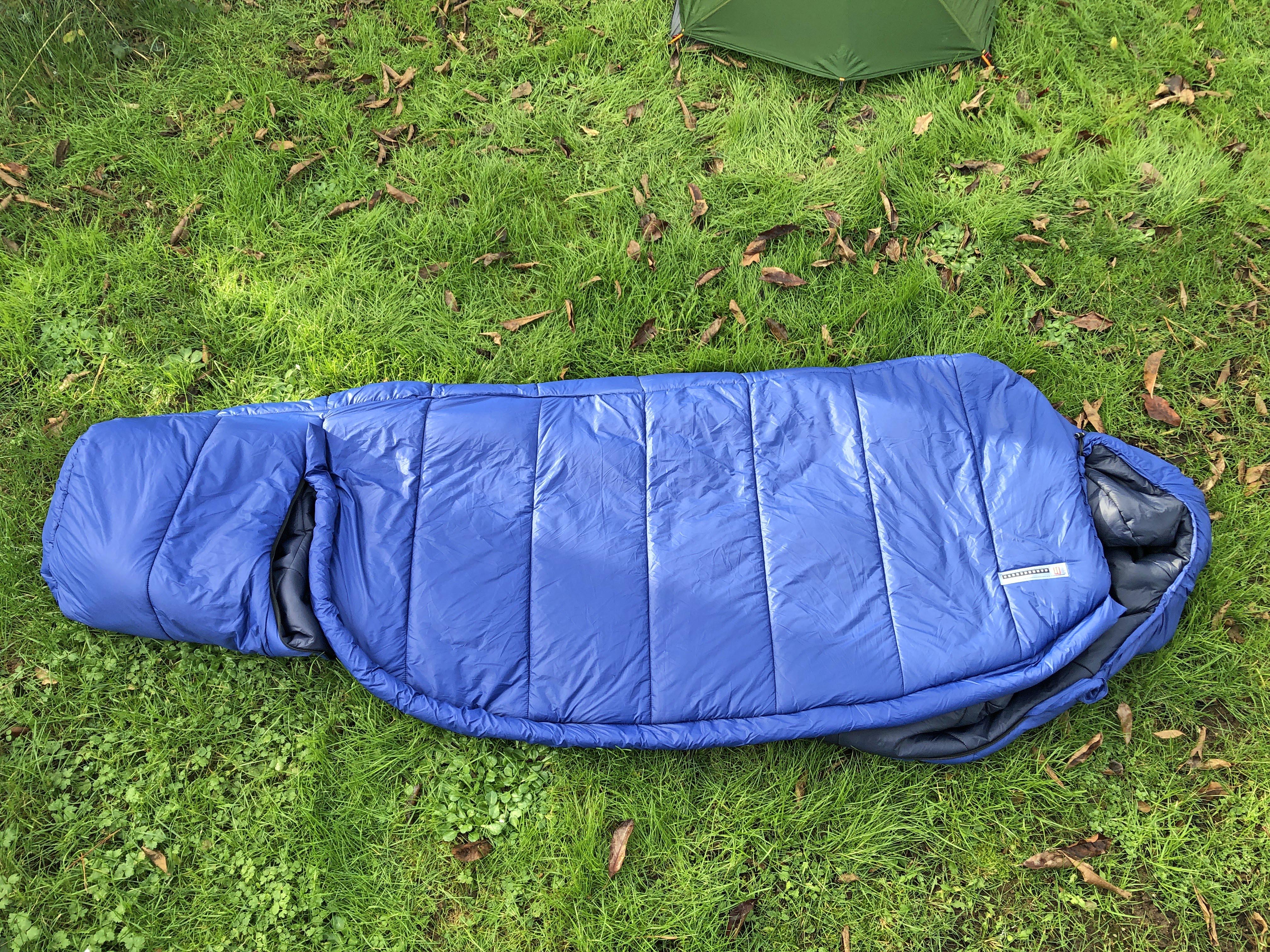
The Biigloo Sleeping Bag on test
For starters, -40°C (-40°F) is really freaking cold. These are the kind of temperatures you can expect to encounter in the deepest darkest reaches of Antarctic Siberia in mid January, so it’s tricky to truly test a product that claims to be able to operate in such extreme conditions (especially when you’re in Devon). It’s almost as hard to imagine that anyone who buys this sleeping bag will ever take it anywhere close to -40°C. Nevertheless, if you’re going to imply a product can protect people in life-threatening environments like this, you really should be 100% certain that it can, otherwise someone might die.
And ‘imply’ is the important word here. Because while the marketing material around the Biigloo sleeping bag talks about how aerogels can operate in -40°C, the actual product has an in-built temperature gauge (an interesting feature in itself), which indicates the comfort range of the sleeping bag is between 16° and 28°. It doesn’t specify whether that’s Celsius or Fahrenheit, but presuming it’s the latter then that means the comfort rating of the sleeping bag is -9°C to -2°C.
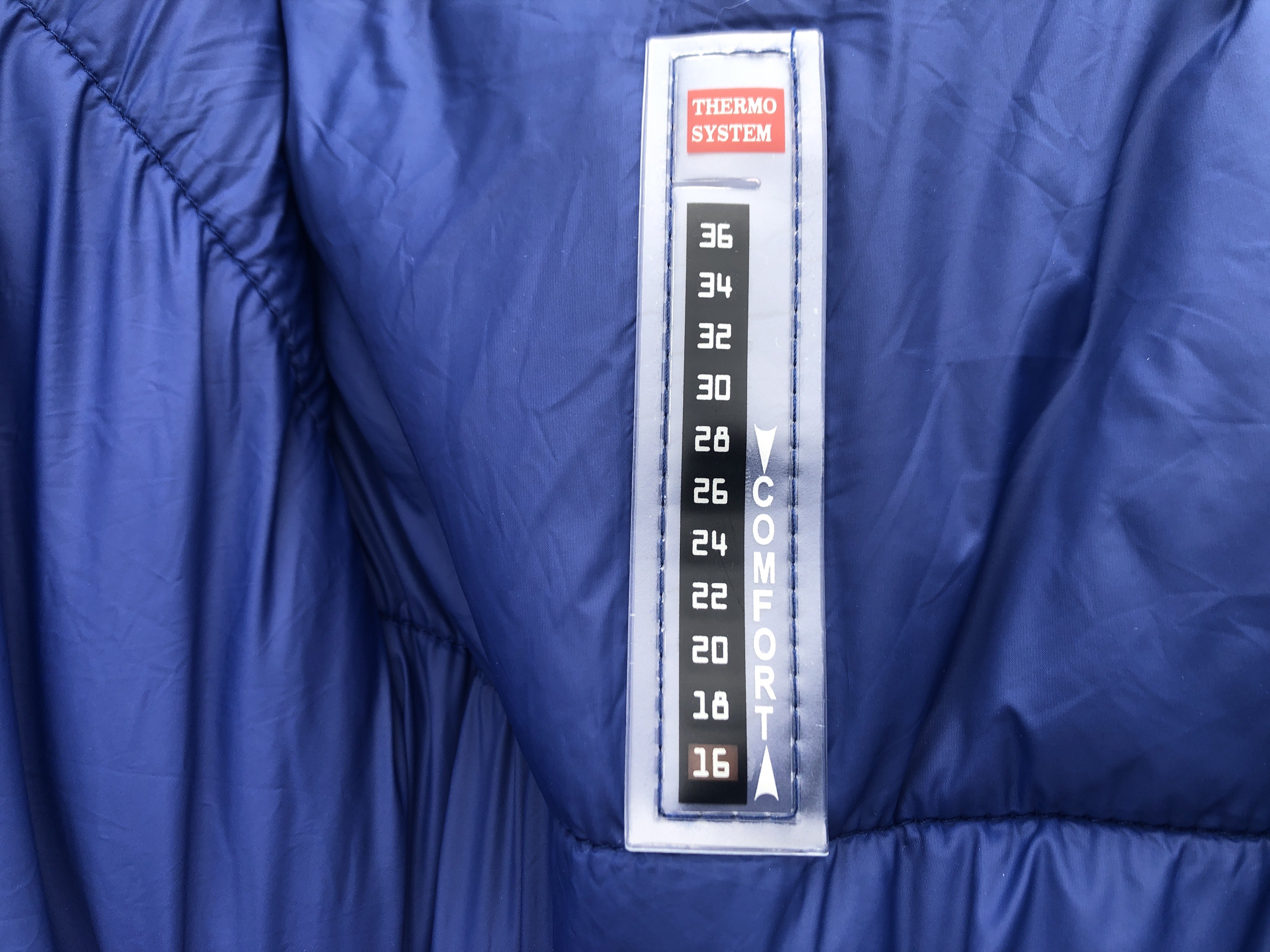
The Biigloo sleeping bag temperature gauge is a good feature
The Biigloo Sleeping Bag: thermal performance
While I couldn’t afford a trip to Siberia, I did test the Biigloo sleeping bag during January in Devon, while camping in conditions that saw overnight temperatures get to -3°C (26.6°F). For this test I was using the bag in conjunction with the Alpkit Whisper insulated camping mat (which has an R-rating of 2.5) and the Alpkit Soloist tent, both of which are really designed for 3-season use.
So, was I warm? The Biigloo sleeping bag has a smooth texture on the inside as well as the outside, and I found it very chilly to the touch when I first climbed into it. I soon warmed up, though. However, during the small hours of the morning, when temperatures were at their lowest, I did experience the odd shiver, and after getting up to look at the stars and have a pee, I put on a thermal top. Unfortunately, while getting back into the bag the zip broke. And I couldn’t fix it.
Get all the latest news, reviews, deals and buying guides on gorgeous tech, home and active products from the T3 experts

Sadly, the zip on the prototype test model broke on the first use, but Biigloo have said this flaw will be fixed before the bag goes on the market.
Now, I should stress I was testing a prototype of the bag, and I expect the build quality of the final product to be a lot more robust (it simply needs a stopper added to the end of the zip run), but this malfunction meant I had to spend the rest of the night using the sleeping bag as a duvet. And I wasn’t warm enough to get a comfortable night’s sleep with this set up.
If I was being more generous than I felt at 5am that morning, I would give this bag a lower comfort rating of somewhere between -5°C (23°F) and -3°C (26.6°F) when the zip is working, at the absolute most (and I’d recommend wearing thermal base layers as pyjamas and using a very good sleeping mat with it when temps are at the southern end of that scale). This is a long way from the -9°C rating the integrated temperature gauge implies, and several Arctic miles from the -40°C limit that the promotional campaign references. The following night I slept in my back-up sleeping bag, the Alpkit Pipedream 400, which is considered a 3-season bag as has a comfort rating of -4.2°C, and I was almost as warm.
Biigloo sleeping bag specifications
- Weight: 1810g
- Length: 210cm
- Upper width: 80cm
- Lower width: 56cm
- Shape: Mummy
- Colours: Navy blue, Deep blue, Brown, Pale green
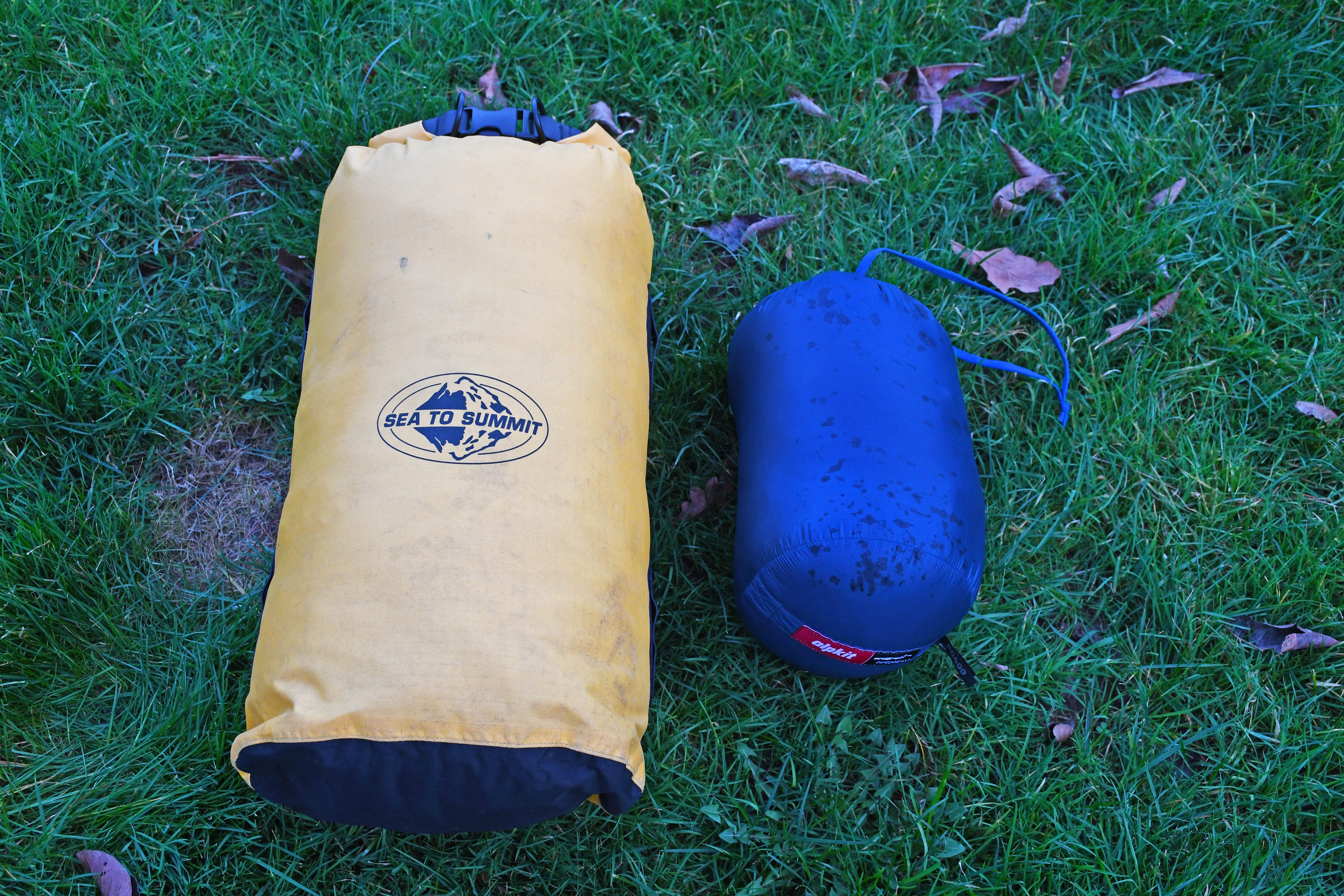
The Biigloo sleeping bag (packed into an unrelated drybag) next to the Alpkit Pipedream 400
The Biigloo Sleeping Bag: weight and bulk
Again, I was testing a prototype of the sleeping bag, and it did not come with a stuff bag or a compression sack (something the company have assured me will be included when the product goes on the market). But this is a big, bulky sleeping bag, and while aerogels might boast an extraordinary warmth-to-weight ratio (the product weight is 50g per square metre), this is only one, relatively small, part of the ingredients that has gone into this sleeping bag. I really struggled to stuff it into a 20L dry bag in order to take it out on the trail, and it took up a large amount of space in my hiking backpack.
Of course, with a proper stuff sack, complete with compression straps, people will be able to make the Biigloo sleeping bag a little bit smaller, but it is still a large bag, and at an estimated 1,810g it is relatively heavy too (the exact weight of final product not known, but I weighed the prototype and it came in at 1,802g without the stuff sack). Down bags with similar comfort levels of protection such as the Rab Neutrino 800, by comparison, weighs in at 1208g and packs down a lot smaller.
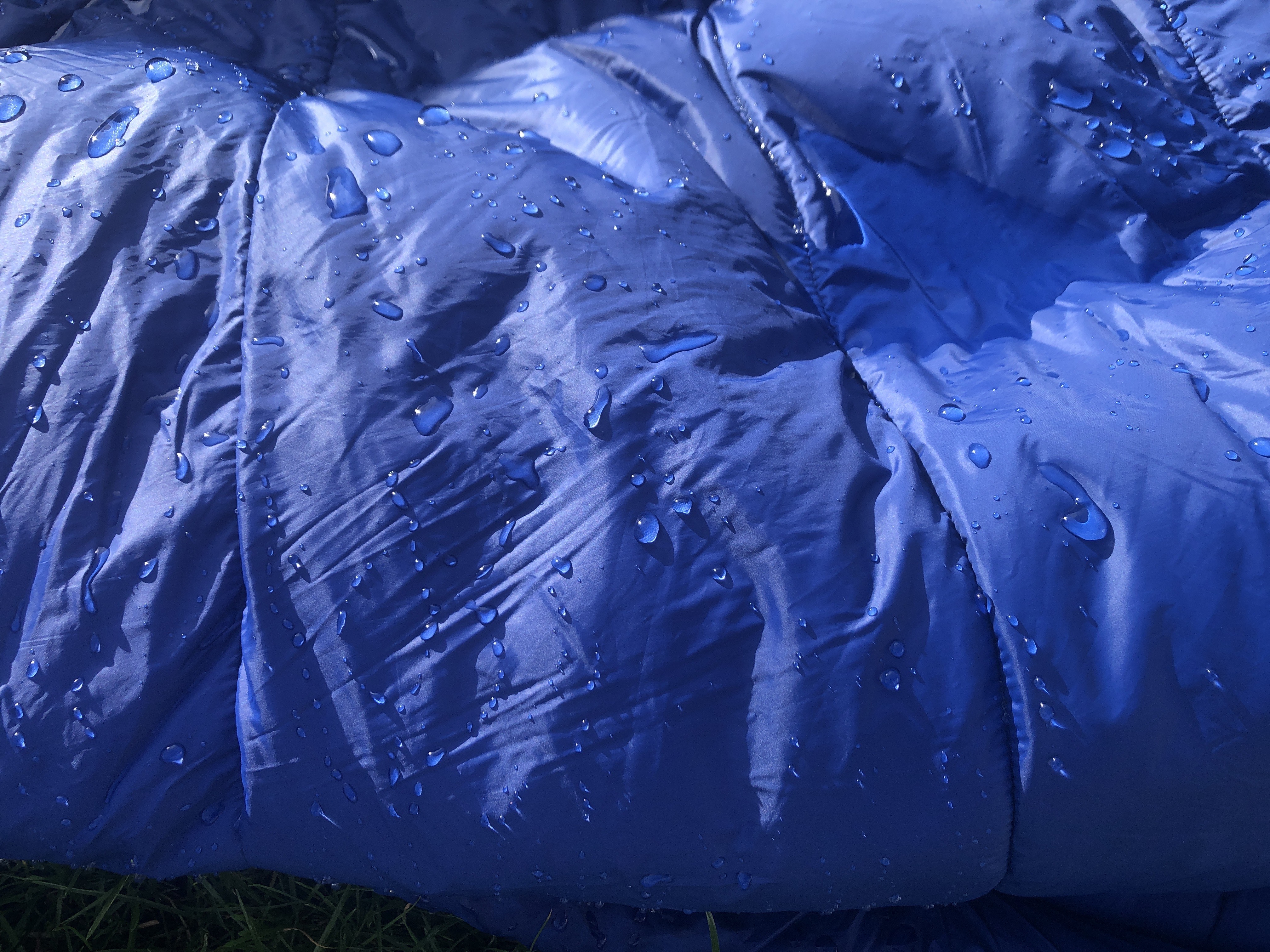
The Biigloo sleeping bag - splash test
The Biigloo Sleeping Bag: materials
In addition to the thin layer of aerogel, the sleeping is filled with DuPont SORONA bio-fleece, which is partly derived from plant fibre (unspecified percentage). The outer of the sleeping bag is made with 20D400T ultra-fine nylon, which is breathable, windproof and has high abrasion and tear resistance. Biigloo claim the bag offers a high water-resistance level (up to 10,000mm).
Here the bag performed better. I can’t verify whether it really has a hydrostatic head rating of 10k (which is a big claim), but I did chuck liberal amounts of water on the sleeping bag and it pooled and beaded on the outer material, before running straight off without penetrating the fabric. The inside of the sleeping bag remained dry, and I think I would be confident using this bag for hammock camping and bivvying where moisture and light rain might be encountered. It would probably work well in snow too (as pictured in the promo material), while snow-holing for example, although I didn’t get a chance to test this firsthand this winter.
Protected by that layer of aerogel, the outer seems genuinely windproof and at the very least splashproof, and it does supply really decent protection against the elements. This is something that definitely can’t be said about down bags, which for all their other benefits are awful when they get wet (even the ones that include down that's had hydrophobic treatment can only really cope with condensation, not an actual drenching). This is a real plus of the Biigloo sleeping bag.
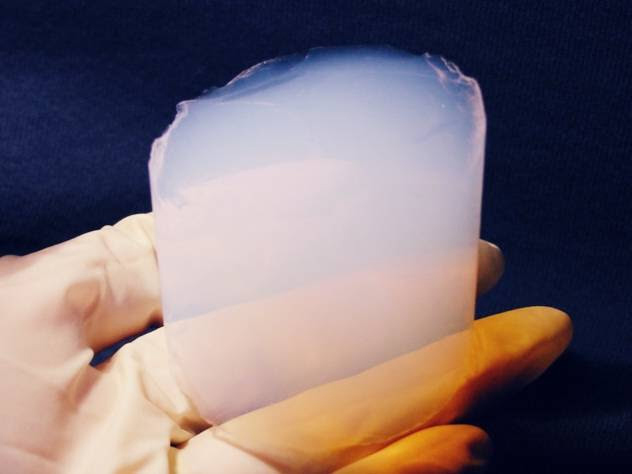
Kryptonite? No, this is aerogel - the enemy of cold and potentially a wonder substance for outdoor kit
Aerogel is non also a fibrous material, so it doesn’t breed bacteria, accumulate bad odours and is and easier to clean. If you do feel the need to launder the bag, it can, apparently, be washed 100 times without losing any of its thermal properties.
Biigloo say their product is more eco-friendly than down sleeping bags, but don’t specify exactly how. Certainly the use of bio-fleece material is positive, and many people have an ethical aversion to down products, which are of course made with bird down, a by-product of the meat industry. However, aerogel is made with gelatin, a colourless substance usually derived from collagen taken from animal body parts or eggs, so vegans and vegetarians may sill run into issues with these bags.
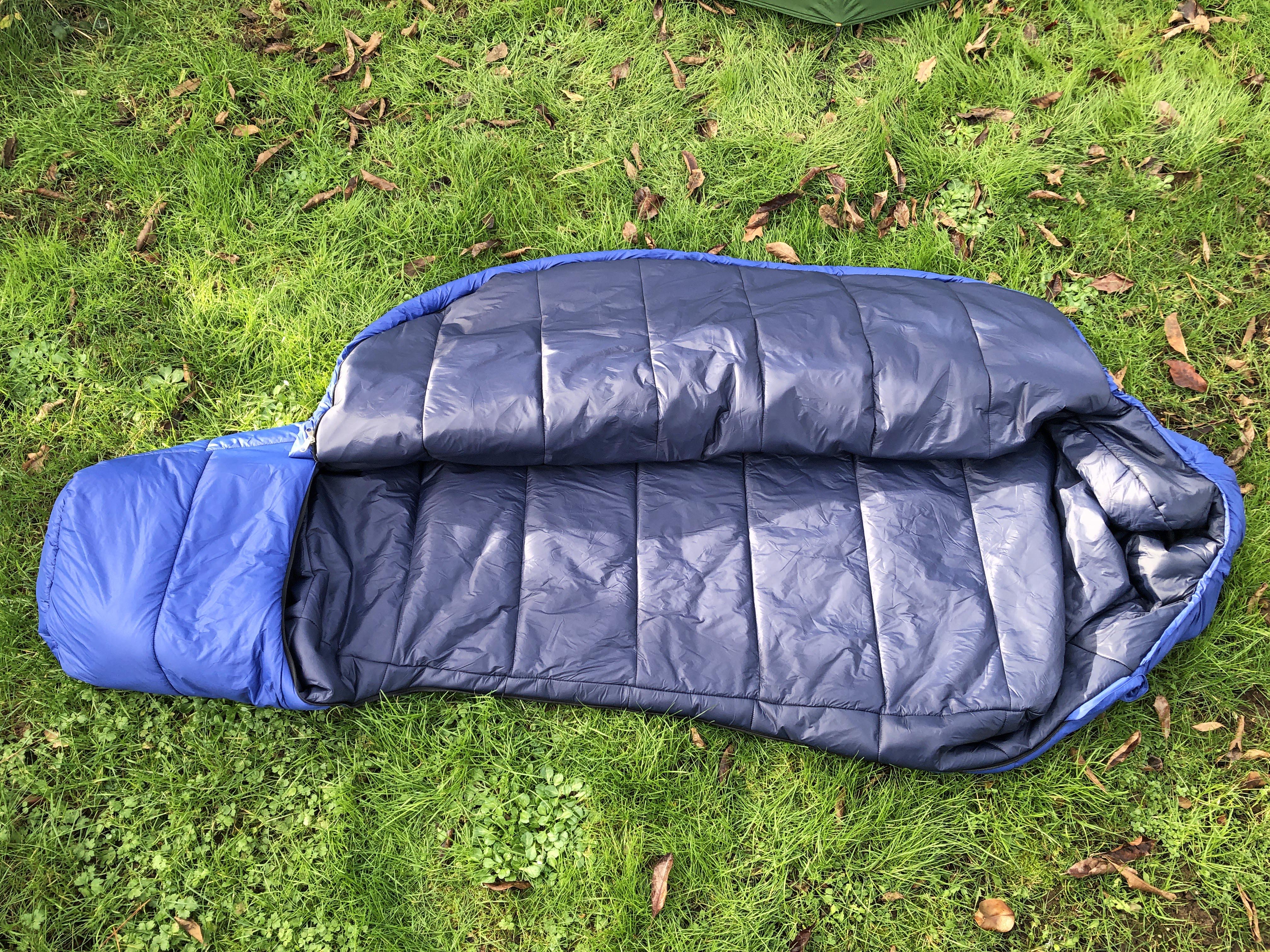
The Biigloo Sleeping Bag: Design
The Biigloo sleeping bag is mummy shaped, and at 210cm long is quite generous in its sizing. It has a double-ended YKK zip (which will hopefully be better finished in the final product, as per above), which instead of simply running the length of the bag on the left or right side, opens and shuts via an unusual wrap-around L-shape design. I quite liked this, and it does make the bag easier to get in and out of, and makes it comfortable to use (especially if you sleep on your back), but it also means you can’t ventilate your feet if you over heat.
The Biigloo sleeping bag has decent hoods, which can be pulled in tight around your face to keep drafts out and warmth in. Finally, the bag features ‘horizontal diffraction seams’, which effectively prevents the padding from moving around and avoids cold spots developing.
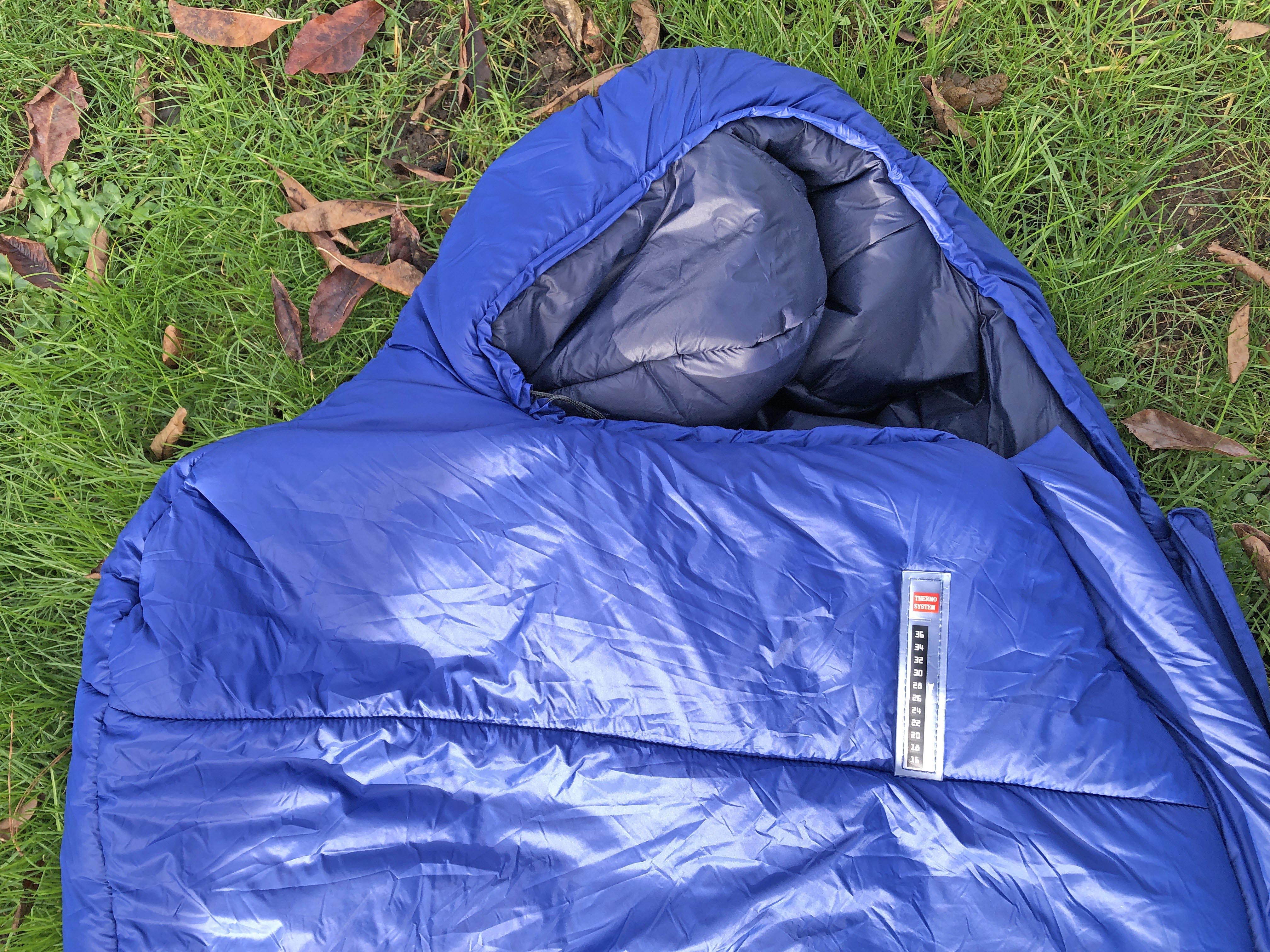
The Biigloo Sleeping Bag: conclusion
Despite all the marketing hype, this bag has precious little to do with NASA, and it will not keep you warm down to -40°C as implied, so I don’t advise taking it on mid-winter camping trips to Siberia. But, it is a genuinely warm (to around -5°C) and weatherproof sleeping bag, which will do a decent job in the vast majority of conditions you’re ever likely to face while camping out during adventures in Britain.
The use of aerogels in a sleeping bag is a really interesting innovation, and it seems to supply real protection against the cold, damp and wind, which is all highly applaudable, and makes this a bag I would use in lots of scenarios where you are more exposed to the elements, from bivvying and hammock camping to snow holing.
I also like the use of a more eco-friendly bio-based filling material along with the aerogel layer, but it is a bulky bag at the moment (although not outrageously so, and in some of the scenarios mentioned above, it would be well worth paying the weight and bulk penalty in order to benefit from the weather protection it offers).
Once again, I should stress that I was using a prototype bag, and some of the aforementioned shortcomings (especially the zip) should be addressed prior to the bag going on the market. At the moment the kickstarter campaign has far exceeded its targets, so hopefully we will see a finalised version of the Biigloo sleeping bag soon, and I’d love to test it. Personally, I like to see them dial down the hyperbole, which leads to unrealistic expectations, and focus on some of the very real benefits offered by this bag and the technology it employs.
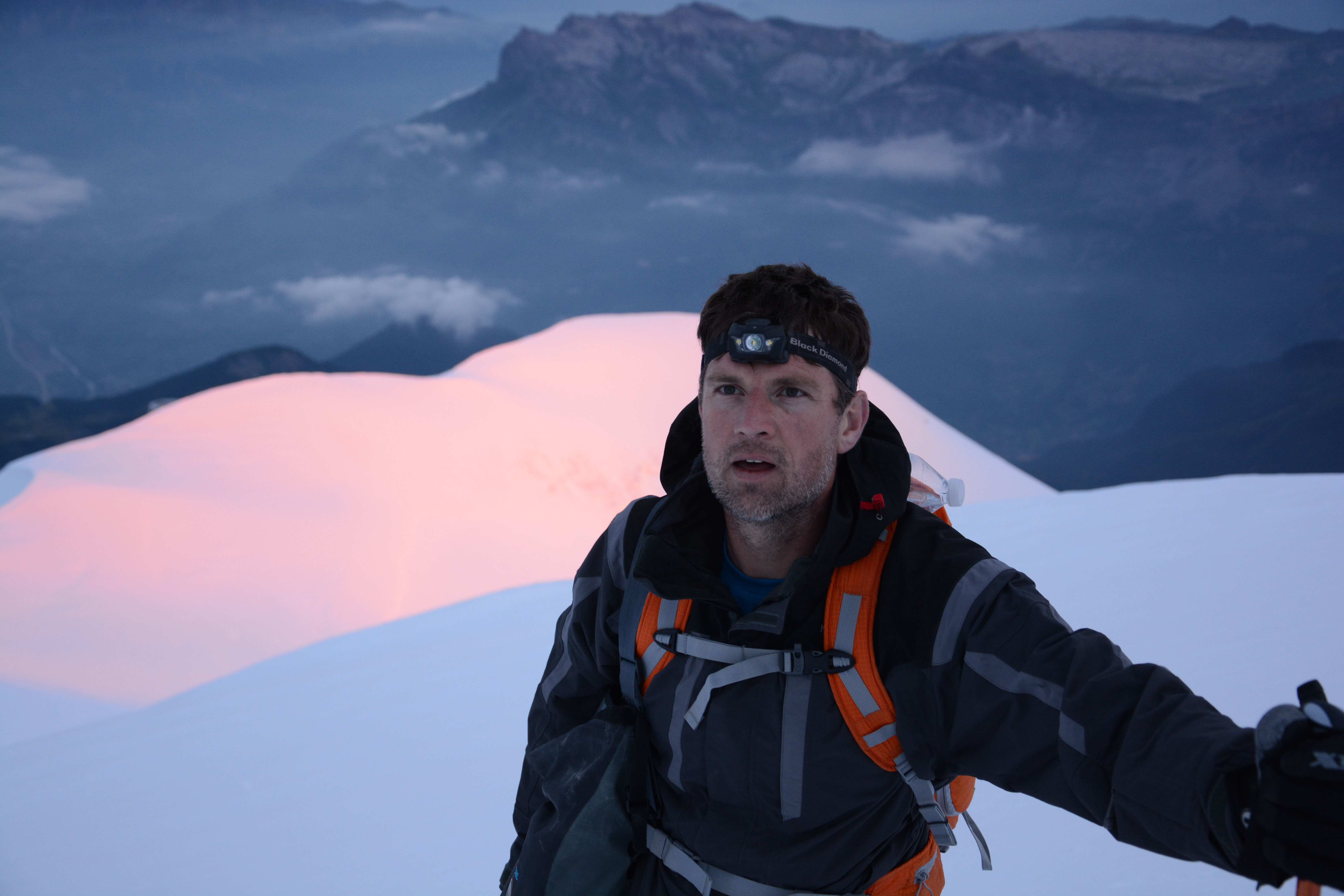
Author of Caving, Canyoning, Coasteering…, a recently released book about all kinds of outdoor adventures around Britain, Pat Kinsella has been writing about outdoor pursuits and adventure sports for two decades. In pursuit of stories he’s canoed Canada’s Yukon River, climbed Mont Blanc and Kilimanjaro, skied and mountain biked across the Norwegian Alps, run ultras across the roof of Mauritius and through the hills of the Himalayas, and set short-lived speed records for trail-running Australia’s highest peaks and New Zealand’s nine Great Walks. A former editor of several Australian magazines he’s a longtime contributor to publications including Sidetracked, Outdoor, National Geographic Traveller, Trail Running, The Great Outdoors, Outdoor Fitness and Adventure Travel, and a regular writer for Lonely Planet (for whom he compiled, edited and co-wrote the Atlas of Adventure, a guide to outdoor pursuits around the globe). He’s authored guides to exploring the coastline and countryside of Devon and Dorset, and recently wrote a book about pub walks. Follow Pat's adventures on Strava and instagram.